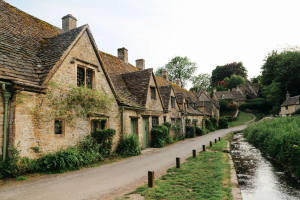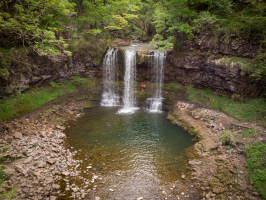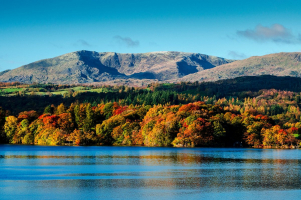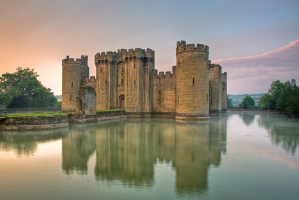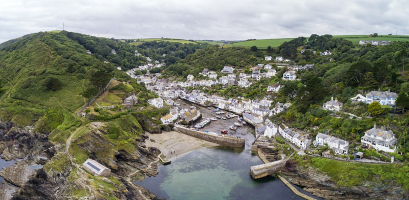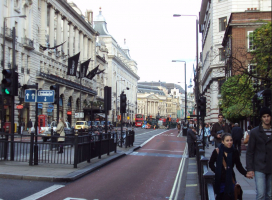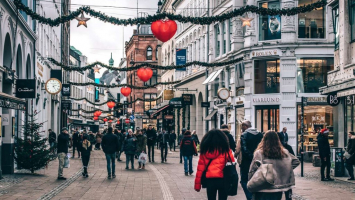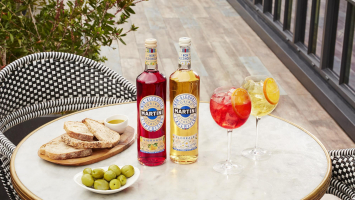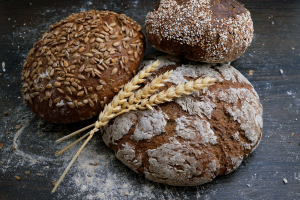Top 13 Most Photogenic Streets in The UK
Toplist picked the top most photogenic streets in the UK, including hip urban centers, picture-perfect villages, and ethereal old harbors.... read more...
-
One of London's most recognizable streets, Brick Lane is located in the East End. Formerly the home of Jewish and French Huguenot immigrants, it is now the hub of the Bangladeshi population.
Brick Lane is renowned for its cuisine in addition to its history. London landmarks include the renowned array of curry restaurants and the 24-hour bagels shops. You may discover food from all over the world there, in keeping with the region's liveliness.
Modern Brick Lane in London, home to cutting-edge street art, renowned curry places, and innumerable galleries and bars, offers photographers exciting alternatives at every turn.
While taking in the hip(ster) and happening atmosphere, visit throughout the day to photograph the always changing street art, unique architecture, and antique shops. To capture this distinctive neighborhood in all its neon glory, visit here in the evening after reading our night photography advice. You may then treat yourself to a renowned curry as compensation. Read up about alternative eating in Hackney, another East London neighborhood with tons of character and a ton of hip places to eat, drink, and have a good time, if you're interested in trying more regional cuisine.
Location: in the East End of London, in the borough of Tower Hamlets
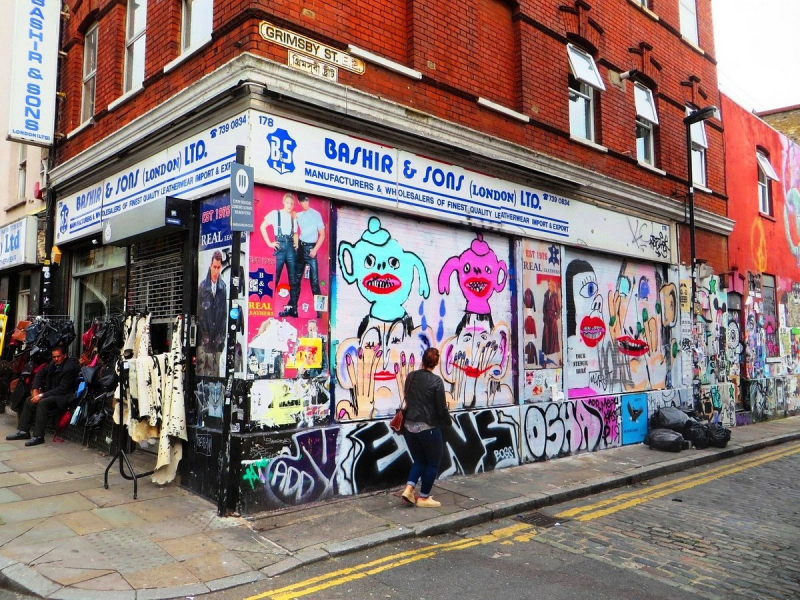
Photo: Tripadvisor 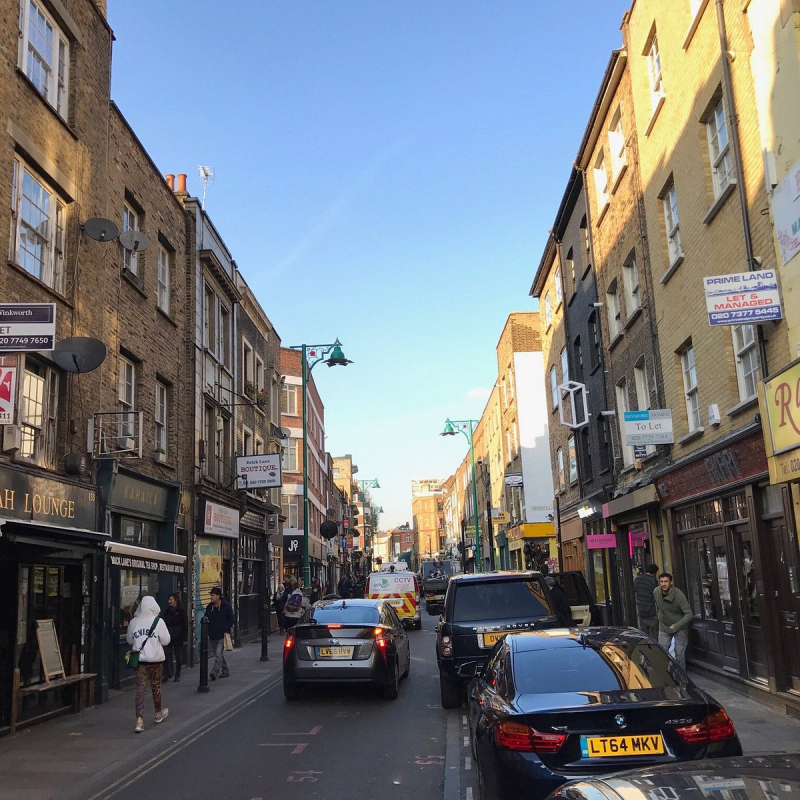
Photo: Londonist -
This colorful terrace of houses in Conduit Mews is ‘tucked away’ within a stone’s throw of Paddington Station. Common in London, terraces like this one were once the stables and coach houses for substantial homes where the stable boys and other workers used to reside. Although Paddington does not have as many instances of these structures as London does, this is for the simple reason that many upper class people did not want to live there. Mews terraces are more likely to be found in Belgravia and Chelsea, hidden away from view of the more stunning homes owned by the wealthy and their great frontages on the street.
Tree trunks were cut down, and a hole was drilled through the entire trunk using a big, long hand auger. If you imagine a pencil as a representation of a tree trunk, the hole through the centre of the pencil would be the black lead. The tree trunk was split along the middle, with one end being shaped like a funnel and the other like a point (almost like a pencil point). Each tree trunk was placed into the one behind it to create a lengthy "pipe" that could transport water over a mile of land. Since there were no contemporary sealants back then, a lot of the water probably flowed out of the poorly constructed seams.
Location: south side of Praed Street, in Paddington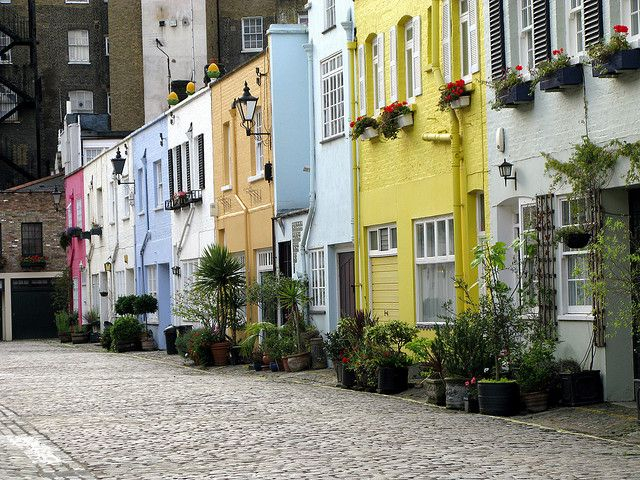
Photo: Pinterest 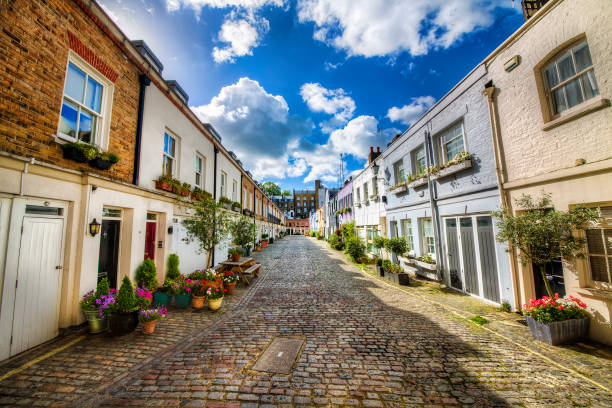
Photo: iStock -
A calm retreat from the busy and stressful Covent Garden is found in the charming Georgian passageway of Goodwin's Court in London. In the maze of commercial streets, it's a spot that is simple to overlook, but when you do, you'll feel as like you've entered another universe.
These Victorian bay windows do indeed transport you to Dickensian London, or perhaps they give you the impression that you are walking through the pages of a Harry Potter book.
Many Potterheads think that Goodwin's Court served as the model for Diagon Alley in the Wizarding World and served as its actual setting. But in reality, it resembles the enigmatic Knockturn Alley more! A dark backstreet teeming with Dark Wizards and illicit activities. You had to see this wonderful court because you are a great Harry Potter fan and a history nut. The history, significance, and things to do in Knockturn Alley are all explained in our Goodwin's Court Harry Potter guide!
The location of these row of nearly flawlessly maintained Georgian homes was first documented in 1690. It feels like you've traveled back in time as you enter this street from the chaos of Covent Garden, which is home to mimes, magicians, and visitors going shopping. It's easy to see why this is one of the top most photogenic streets in the UK.Location: Covent Garden, London
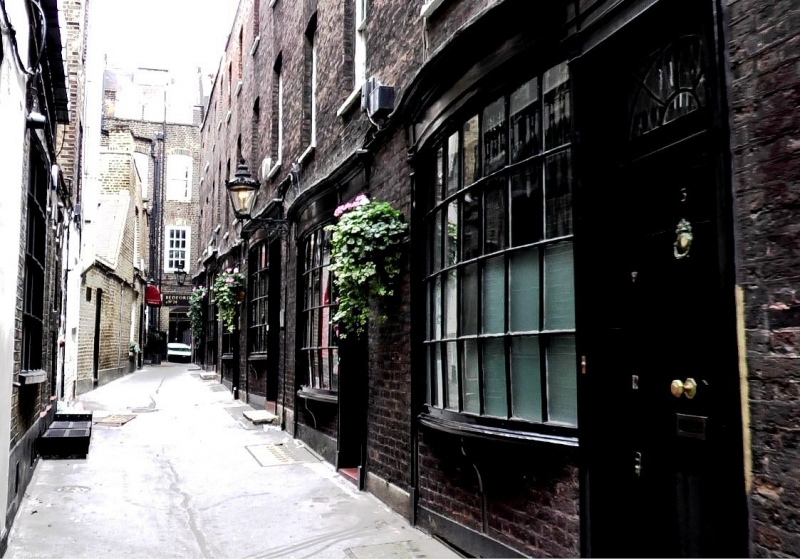
Photo: TripAdvisor Video: Visiting London Guide -
The isolated West Yorkshire village of Haworth, which clings to a high hill with the ominous Pennines towering behind, is well known for its illustrious literary past. The Bront sisters famously resided and worked here. It also exudes a lot of attractiveness for photographs. So, it is one of the most photogenic streets in the UK.
Most likely, you'll want to get shots of Haworth's Main Street from both angles. Inhale the hill's downward breeze (as well as the spectacular moorland) from the top, then do the same from the bottom while gazing upward.
Haworth's charms are well known, therefore it is advisable to arrive early. Given the area's natural splendor, photographers would do well to think about staying longer. With plenty of useful information in The Rough Guide to Yorkshire, Yorkshire is not short on odd things to do if you enjoy new experiences.
During the Brontes, there is some misunderstanding regarding whether property on Main Street serves as the Post Office. According to the Trade Directory, William Hartley served as Haworth's postmaster from 1830 until 1857; a map from 1853 definitely identifies the building in the picture as the Post Office. Edwin Feather was appointed postmaster in 1861, at a period when the Brontes had all passed away and the post office was situated on different property.
Location: Haworth, Northern England
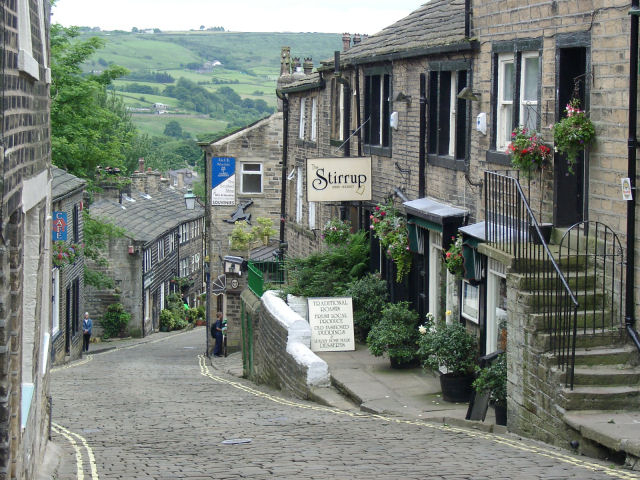
Photo: Wikimedia Commons 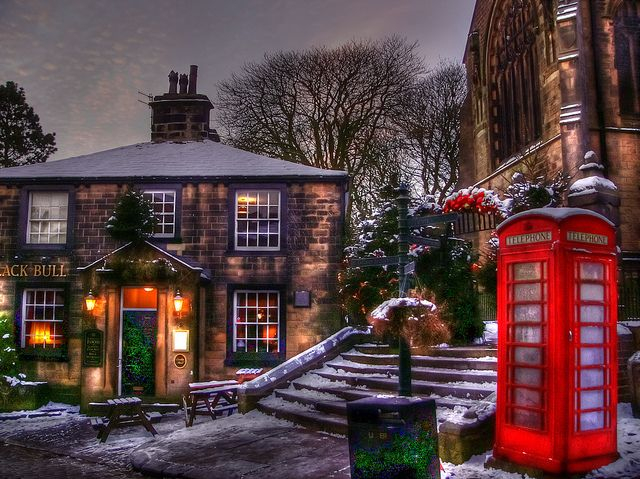
Photo: Pinterest -
Many of Chester's characteristic structures, which make up Eastgate Street, are connected to the Tudor resurgence. It is a historic shopping street. A significant landmark that leads to some small but intriguing stores is the Eastgate Clock.
Chester, which was first built as a Roman fortress in the first century, is full of picturesque locations, with Eastgate Street and its famous Victorian turret clock dominating the heart of the city.
It is immediately obvious why it is a recognized landmark and that Big Ben is Britain's second-most photographed clock. It was constructed atop a Georgian arch and features lace-like ironwork, a rich red and gold surround, and other details that beg for close-up shots.
Chester Rows, a notable piece of architecture, is located on Eastgate Street. These elegant half-timbered galleries, which date from the medieval era and are exclusive to Chester, are another must-photograph location.Location: Chester, Northern England
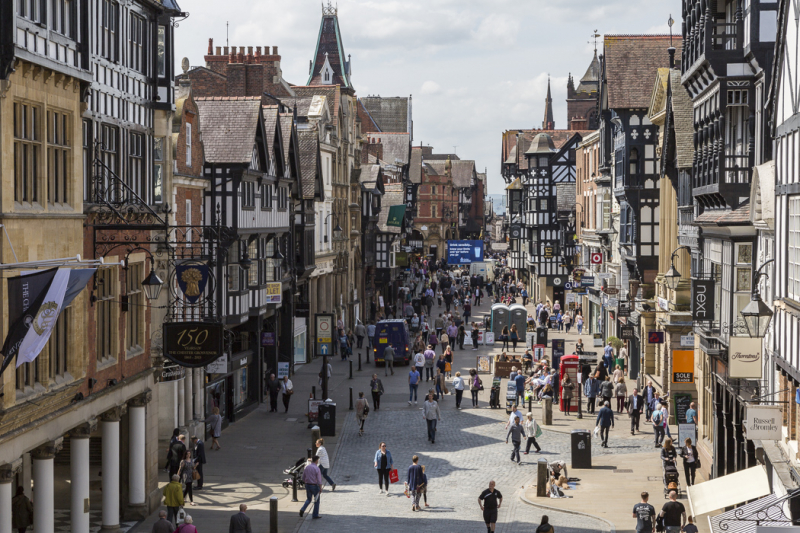
Photo: Custodian REIT plc 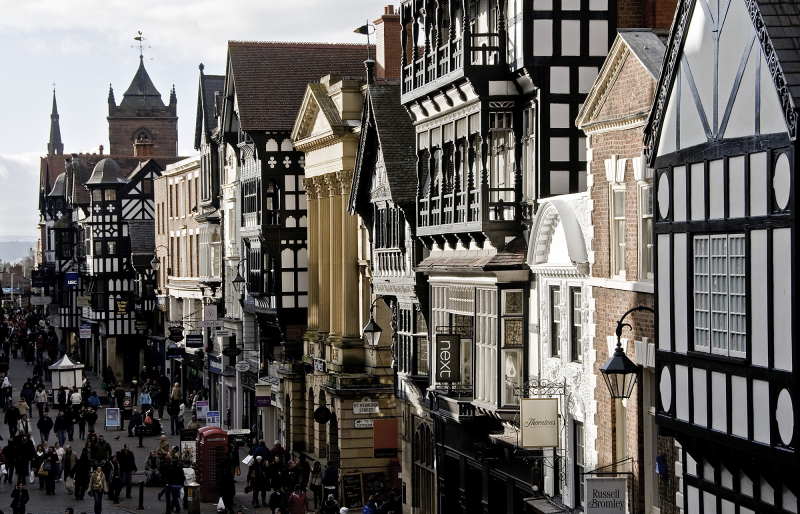
Photo: Ed O'Keeffe Photography -
The Shambles in York, one of Europe's best-preserved medieval shopping alleyways, is a treat to stroll through while having your phone nearby to capture its vintage vibe.
The Shambles is a famous street in York, England, where ancient structures from the fourteenth century and earlier have been maintained. The street is congested with numerous jettied-floored timber-framed structures that several feet overhang it. It was formerly referred to as The Great Flesh Shambles, most likely from the Anglo-Saxon word for the shelves butchers used to show their meat, Fleshammels (literally, "flesh-shelves"). Thirty-one butcher businesses lined the street in 1885, but none are still there now.
Even though there are no original features left, restoration work has been sensitively and historically accurate. The entire winding avenue, which is rumored to be JK Rowling's inspiration for Diagon Alley, is ideal for experimenting with angles and lighting.
It's certainly worth spending at least a few days in York, with a copy of Rough Guide Staycations York on hand to make the most of your vacation, especially as York made it into our list of the finest city holidays in the UK. The once-beautiful old buildings have been refurbished and are now home to cheery cafés, eccentric boutiques, and even a coin and stamp dealer. The odors emanating from the clothing, accessory, and gift stores, as well as the chocolate, fudge, and sweet shops, are also much more pleasant.Location: York, Northern England
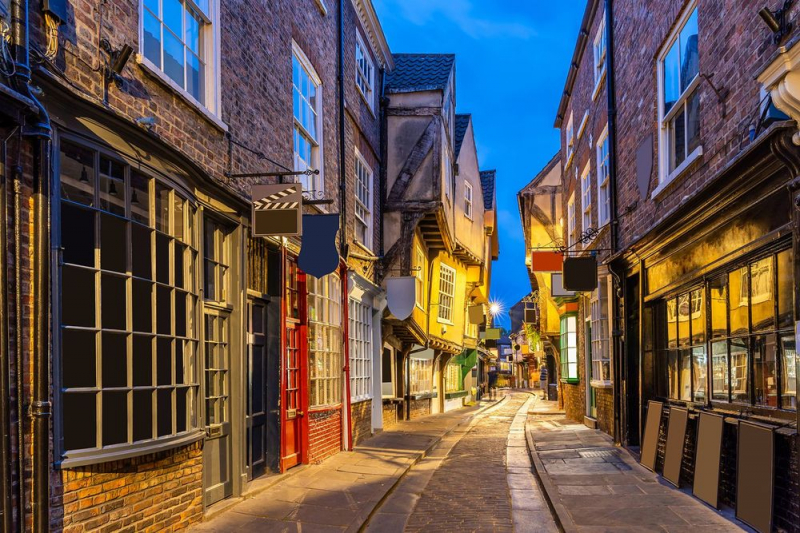
Photo: Wikipedia 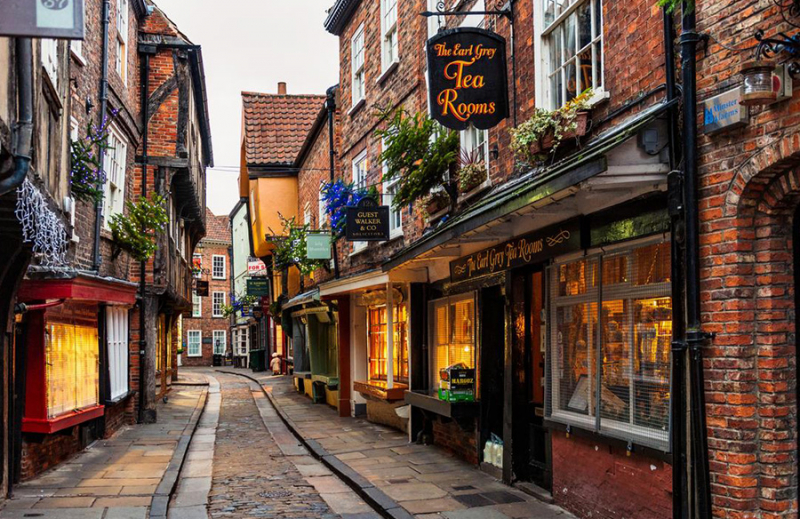
Photo: RTF | Rethinking The Future -
Lincoln's Steep Hill, the fourth steepest in England, no less, is the ideal starting point if you're trying to capture the essence of British quaintness. It's best to start from the bottom.
When Lincoln was still known as Lindum Colonia and its occupants opted to move their colony down the hill, Steep Hill was initially used by locals. Excavations have revealed that the hill once had steps lining it.
As you make your way up the winding cobblestone path, you'll see a seemingly never-ending stream of tastefully decorated stores and magnificent brick and stone structures of historic value - the street's architecture dates back hundreds of years.
Don't pass up the opportunity to concentrate on the half-timbered Harlequin building, either. Here, an 18th-century inn has been converted into a stunning bookshop from the twenty-first century, and a 12th-century Norman house has been turned into a tearoom.
Today, the independent enterprises in Steep Hill are well known. These include retro shops, charming tea rooms, chocolate and fudge parlors, and more. The 16.12-degree gradient cobblestone street was named Britain's Great Street in 2012 by the Academy of Urbanism. The majestic Lincoln Cathedral and Lincoln Castle are located at the summit of Steep Hill, which extends from The Strait, another region rich in historical history. Although the Steep Hill Shuttle can make it simple for you to reach the top, Steep Hill is not suited for persons with accessibility needs.Location: Lincoln, The Midlands
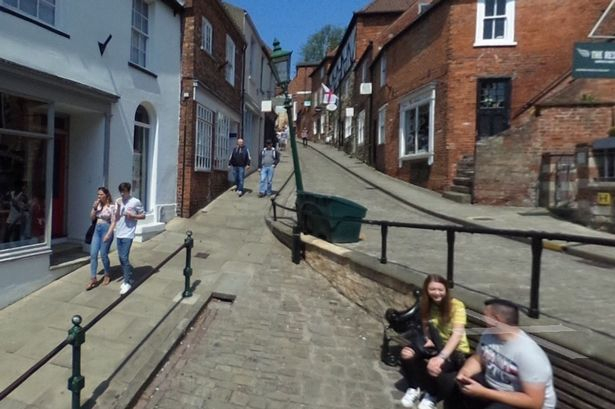
Photo: Lincolnshire Live 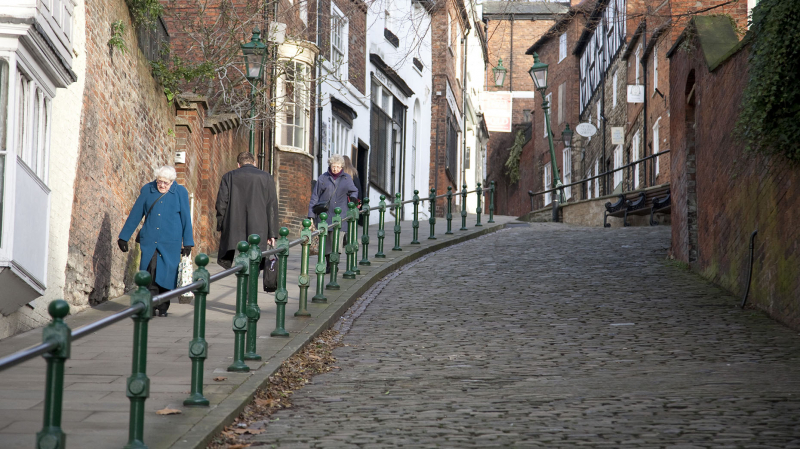
Photo: The Lincolnite -
Medieval Elm Hill is a delightful delight to photograph at any time of the year, but it comes highly recommended for responsible photographers who are eager to go on out-of-season visits.
In the fall, stop along this charming street of former merchants' buildings to photograph the canopy of rust-colored leaves. Then, when winter approaches, cheery holiday vibes are released from the adorable cafes and independent shops, with ambient street lighting enhancing the ambiance.
Elm Hill is without a doubt Norwich's most well-known street. Additionally, it is the city's most comprehensive medieval street. Nearly everything was destroyed by a large fire in 1507, but the buildings were rebuilt, and today we may enjoy a lovely cobbled street with merchant's houses, thatching, private dwellings, speciality shops, and little cafes.
Elm Hill is a photographer's paradise because it never loses its charm or attractiveness. Wander around over the summer looking at stores like The Bear Shop, a cute tiny shop that specializes in bears and memorabilia. Be amazed by the vibrant colors of the autumnal foliage. Elm Hill is very delightful and Christmassy in the winter, and bright and lively in the spring as fresh life emerges.
Location: Norwich, East England
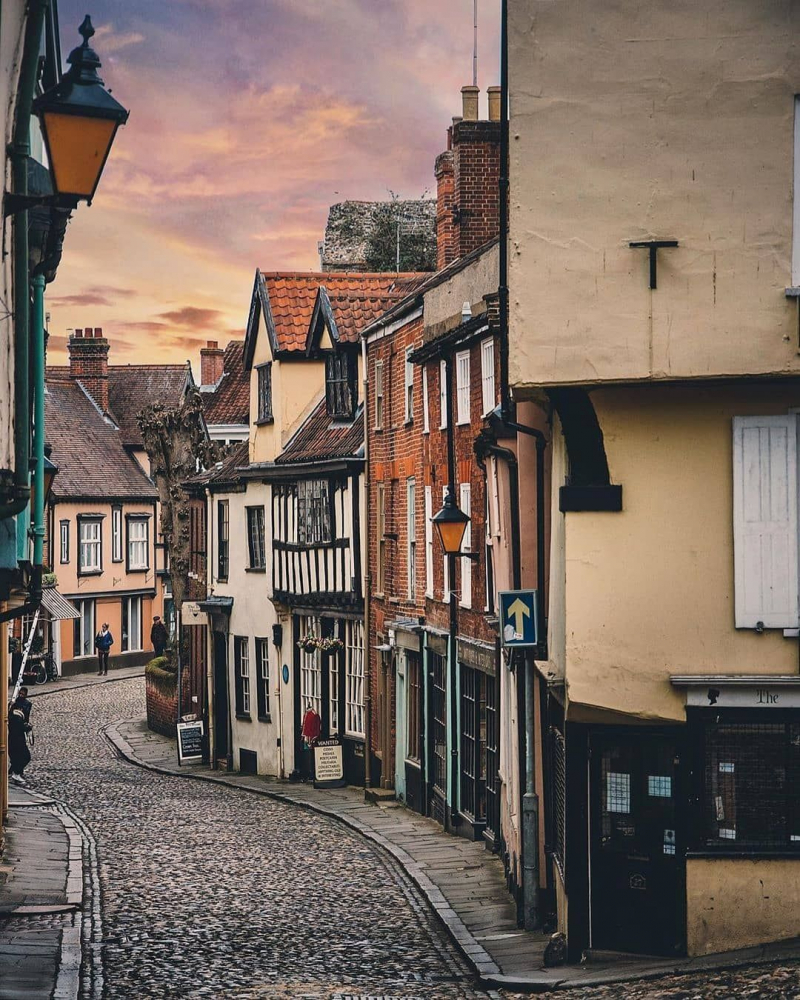
Photo: Wikipedia 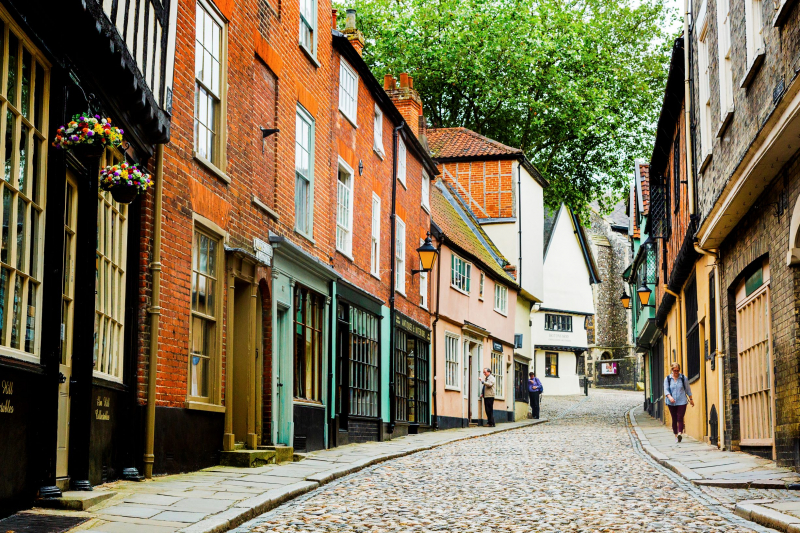
Photo: Visit Norwich -
In the English county of Dorset, the town of Shaftesbury contains a steep cobbled roadway called Gold Hill. One of the most lovely vistas in England is the view gazing down from the top of the street.
One of the few structures from Shaftesbury's pre-eighteenth-century architecture still stands at the top of the street, St. Peter's Church, which dates to the fourteenth century. The former Priest's House (Sun and Moon Cottage), which is still a part of the Gold Hill Museum complex but now houses a store, is close to the church.
As demonstrated by the famous Hovis bread TV commercial from the 1970s, Shaftesbury's Gold Hill is a breathtakingly beautiful location. The hill's ascent snakes up a group of thatched and stone homes, providing yet another breathtaking (and extremely steep) illustration of rural England's charming attractions. It's hardly surprising that this is one of the UK's top 20 most photogenic streets given that they truly do appear to have been plucked from a fairy tale.
You'll be rewarded with moving vistas of the Dorset countryside once you've worked up a sweat at the summit. Don't miss the opportunity to photograph Gold Hill Museum and St. Peter's Church from the 14th century at the peak. Its acclaimed cottage garden is an excellent location for macro photography.Location: Shaftesbury, Southwest England
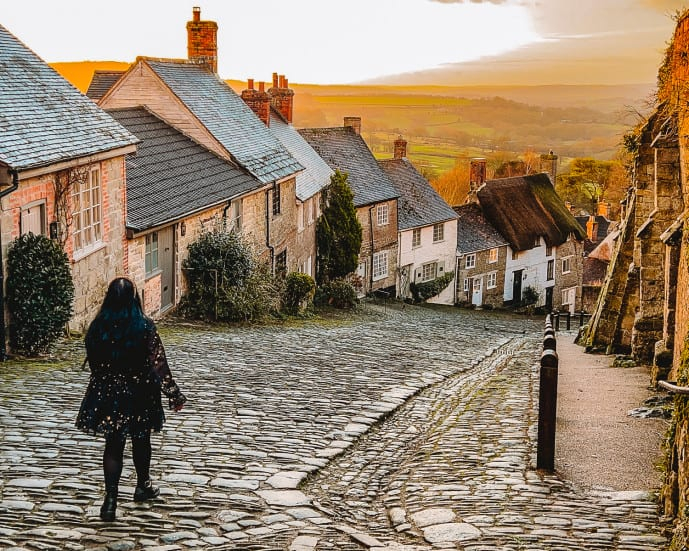
Photo: Third Eye Traveller Video: Elodian -
Gandy Street Exeter must be the one street in Devon's capital city that you really must visit. There are suggestions that Rowling drew inspiration for Diagon Alley from Exeter's Gandy Street, similar to The Shambles. It's also one of the reasons Exeter made our list of the greatest things to do in Devon. Exeter is a tiny, twisting enclave of independent shops, bars, and cafes. If you like less shoppers in your photographs, arrive here early on a weekday, as is typically the case with gorgeous street locations. Alternatively, visit at night to experience the enticing ambiance created by brasseries and cocktail bars.
It dates back to the Saxon era and is now a tiny jewel that may be found tucked away along a side street from the busy Exeter High Street. Over the years, it has also gained notoriety among Potterheads because it is believed that J. K. Rowling utilized this location as inspiration for her Wizarding World after visiting it. Many residents of Exon think Gandy Street and Diagon Alley are connected. How much of that is accurate, though?
It is a must-see attraction in Exeter and is well-liked by both locals and visitors. Due to an urban Exonian legend and fan theory, it's also very well-liked among Harry Potter and the Wizarding World enthusiasts.
Location: Exeter, Southwest England
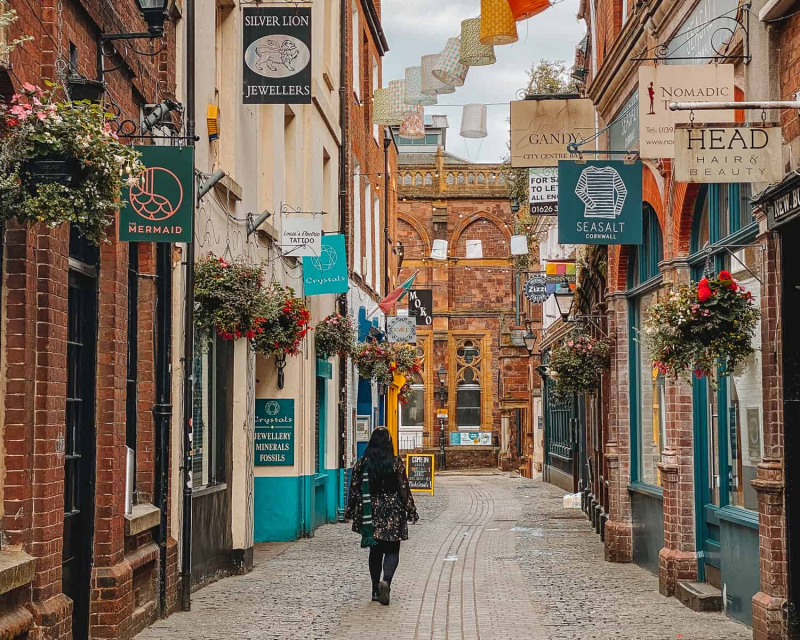
Photo: Third Eye Traveller 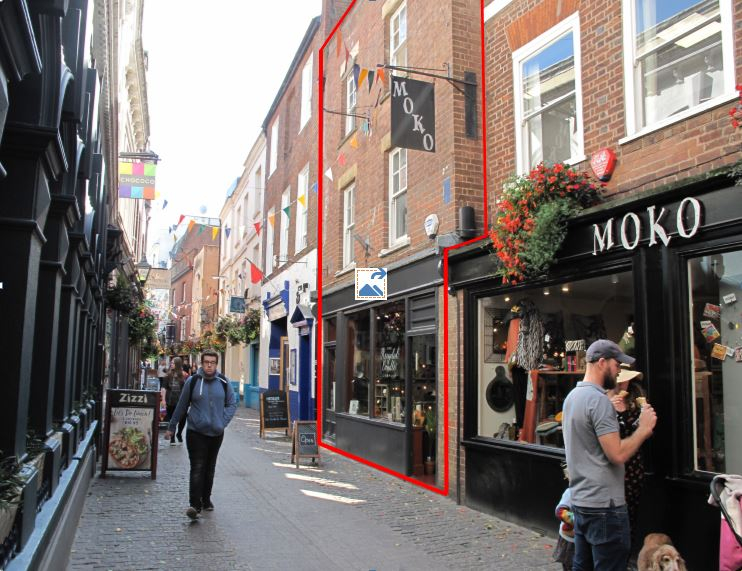
Photo: Exeter Chamber -
A huge number of the American troops stationed here during the war found the old-fashioned street with the charming and distinctive name of Christmas Steps to be one of the city's most picturesque features. Bristol's Christmas Steps Art Quarter, which dates to the 1600s, is drenched in a magnetic charm that is more than deserving of its holiday moniker.
The Quarter, which consists of seven lovely alleys and the steps themselves, is a maze of ancient pathways that offers new picturesque chances around every corner. Don't forget to take pictures of the lantern-style street lamps and the vistas down the flagged steps. Visit at dusk for added mood since fairy lights give the already magical scene a little additional enchantment.
The route from Froom Bridge to Lower St. Michael's Hill was a steep, narrow lane until the second part of the 17th century. According to reports, the walkway is extremely dangerous for passengers, especially at night and in snowy conditions. Because there was likely not a continuous row of houses on either side of the alley in those days, a large portion of its length may have been taken up by the St. Bartholomew's Hospital estate's boundary wall on Christmas Street.
The repair of the tunnel was not started until September 1669 by Jonathan Blackwell, who had served as one of Bristol's sheriffs 17 years before, under Henry Gibbes' mayoralty.
Location: Bristol, southwestern England
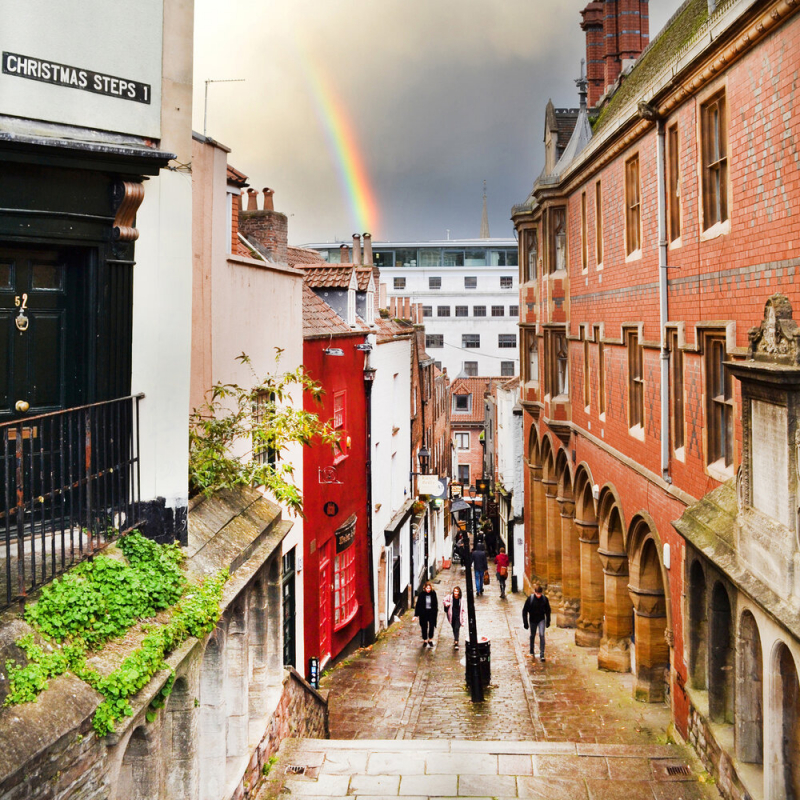
Photo: www.christmasstepsartsquarter.co.uk 
Photo: Flickr -
Mermaid Street in Rye is one of the most recognizable streets in the world. Its interesting houses and cobblestone street would not be out of place in The Lord of the Rings and serve as the ideal window into Rye's past. Mermaid Street appears to have not changed at all since the industrial century, in contrast to the majority of other areas of the town.
The Mermaid Inn has stood in its prominent location for more than 800 years and is surrounded by a steep incline of sparkling cobblestones, charming crooked cottages, and half-timbered structures, while nearly every property on the street has a tale to tell.
Even though Rye's history alone draws many tourists, the narrow street also draws a lot of attention since it creates the ideal backdrop for photos. The Ouse Valley Viaduct and Cuckmere Haven are just two of the many Instagrammable locations in Sussex, but Mermaid Street may be the most attractive road in all of Britain for some reason. The vegetation covering the buildings and their worn-out signage are just as photogenic as standing atop the hill to capture the overall old-time charm.
For instance, pay attention to the creaky, swaying sign outside the Mermaid Inn. Since the 12th century, this famous hotel and inn has been providing thirsty inhabitants with refreshments.
Location: Rye, Southeast England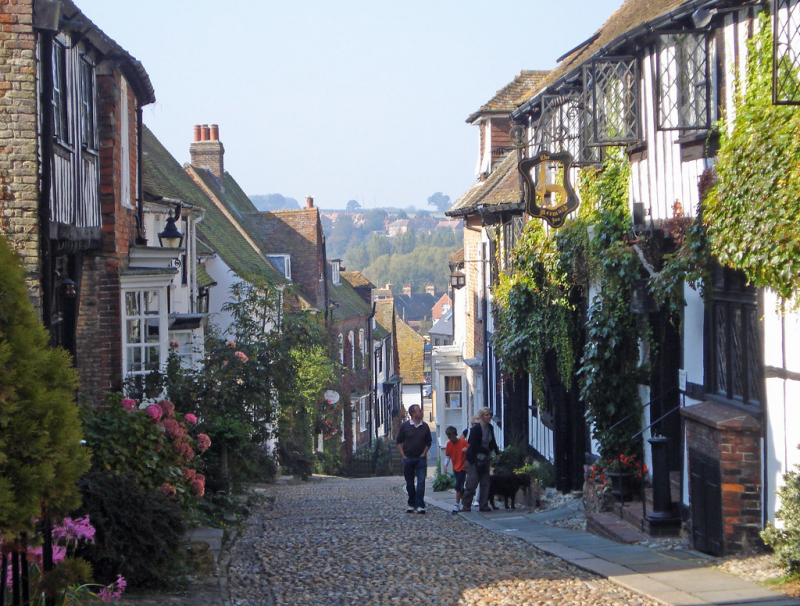
Photo: Flickr 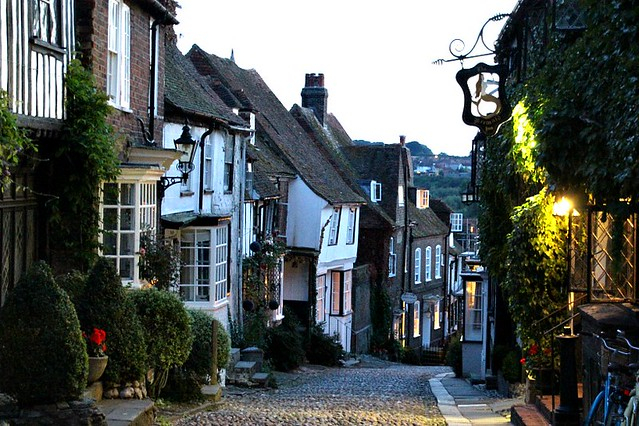
Photo: Flickr -
For a leisurely shopping trip where you may pick up a souvenir from one of the several independent boutiques and gift shops, head to Whitstable's Harbour Street.
Numerous articles about Harbour Street's shops have appeared in the national press. Look inside one of the numerous independent galleries dotted across the area if art is your thing. Pick up some locally grown products at the twice-monthly farmer's market if you can to support Whitstable's small business owners.
There is no shortage of subject matter in and around Whitstable Harbour for photographers. Its attractiveness extends beyond the typical chocolate-box sight because it is a functional harbor, which makes it all the more intriguing for photographers who like to add more personality to their images. The shingle beach has tons of appeal, especially after dusk, when it is flanked by cheerful tiny beach cottages and former fisherman's huts, which are notable for their characteristic black clapboard façades.
The chaotic collection of businesses and cafes along Harbour Street, which is set back from the ocean, is perfect for photographing unusual architectural elements and street scenes. This makes it the most photogenic street in the UK if you desire your pictures to have a unique, personal touch.Location: Whitstable, Southeast England
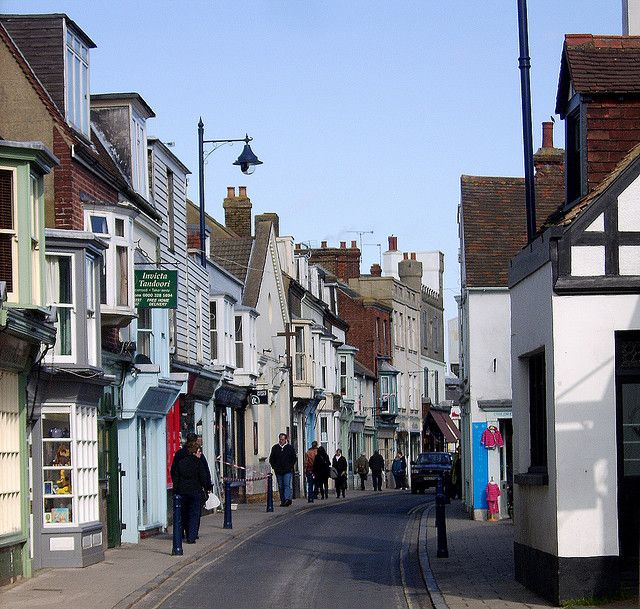
Photo: Pinterest 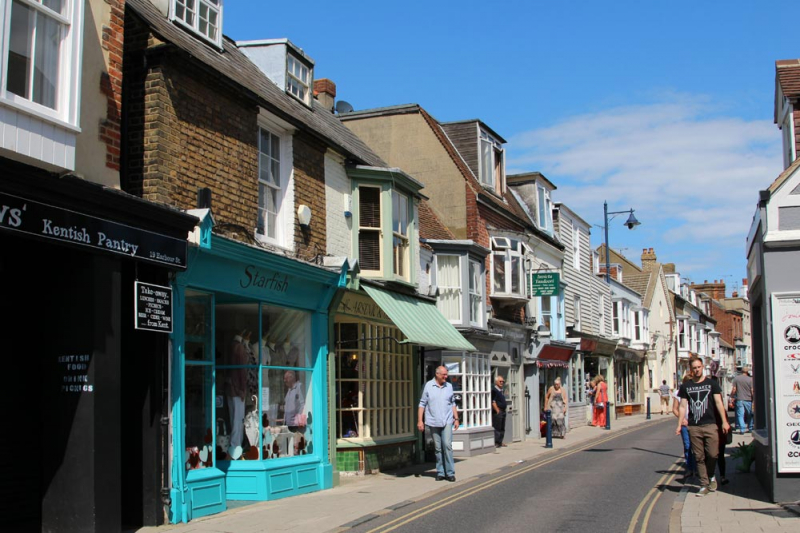
Photo: Beautiful England Photos















